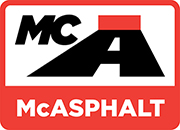High Float Asphalt Emulsions
Chemical surface-active agents, serving as emulsifiers, are classified by the electrochemical charge that is attained when they dissociate in the water solution. In the case of high-float emulsions, the chemical charge is negative. The chemical type and quantity of surface-active agents used in the manufacturing process governs the process in which the resulting asphalt emulsion can be used.
High-float emulsions have a gel structure which prevents the flow of binder from high spots to low spots. The amount of solvent included in the emulsion varies depending on the purpose of the particular grade of emulsion. For example, in the case of a surface treatment, the solvent allows for the emulsion’s upward movement through the aggregate. In cold mixes, it allows for better mixing with the graded aggregate before the emulsion breaks.
The mixing time and the rate of cure can be controlled through formulation.
